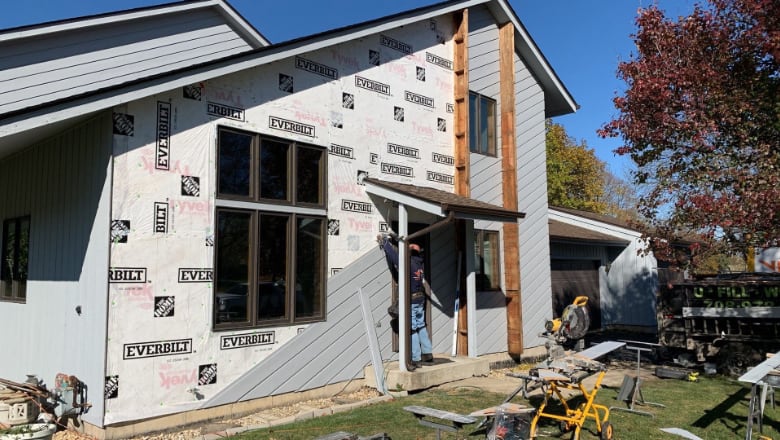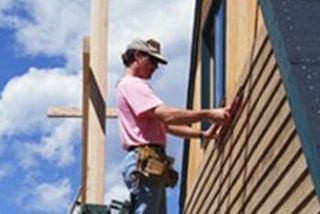Morris Siding Contractor Committed to Excellence in Every Project
Morris Siding Contractor Committed to Excellence in Every Project
Blog Article
The Important Overview to the Various Kinds Of Exterior Siding and Their One-of-a-kind Benefits
In the realm of home enhancement, picking the best exterior siding is an important choice that affects both visual appeal and useful efficiency. With so numerous alternatives to take into consideration, which home siding product truly stands out for your details job?
Timber Exterior Siding
Wood home siding, a prominent selection for domestic outsides, supplies a timeless visual that combines all-natural elegance with structural stability. This home siding product is readily available in various styles, including clapboard, roof shingles, and board-and-batten, enabling property owners to customize their appearance to match their layout preferences. Timber house siding is generally crafted from resilient species such as cedar, redwood, or yearn, which are known for their durability and capability to withstand ecological stress factors.
One of the key advantages of timber house siding is its excellent insulation residential properties, which can add to power efficiency and lower home heating prices. Additionally, timber house siding is biodegradable, making it an eco friendly alternative when sourced sustainably. Regular upkeep, including paint or discoloration, can lengthen its lifespan and boost its appearance, enabling home owners to protect the all-natural appeal of the timber.
However, possible downsides consist of susceptibility to bugs, rot, and climate damages, requiring sufficient treatment and maintenance - morris siding contractor. Regardless of these issues, when correctly looked after, timber exterior siding can offer a beautiful and durable remedy that boosts the personality of a home while using a warm, welcoming environment

Plastic Home Siding
Vinyl house siding has actually emerged as a leading option for home owners looking for a low-maintenance exterior choice that incorporates durability and affordability. This functional material is crafted from polyvinyl chloride (PVC), making it resistant to different weather condition conditions, including moisture and UV rays. Because of this, plastic house siding does not warp, rot, or discolor, guaranteeing resilient visual charm.
One of the main benefits of plastic home siding is its considerable variety of colors and styles, allowing home owners to achieve the preferred search for their property without the requirement for constant repainting. Furthermore, plastic exterior siding is easy to mount, which can considerably lower labor expenses throughout building or restoration jobs.
Vinyl exterior siding also contributes to power effectiveness. Several options feature insulation support, which enhances thermal performance, assisting to maintain comfortable interior temperatures and potentially lowering power bills. Its smooth surface area helps with very easy cleansing, needing only routine cleaning with a garden hose to remove dirt and particles.
Fiber Concrete Siding
Fiber concrete siding has obtained traction among home owners and home builders alike because of its amazing mix of resilience and visual versatility. Composed of a blend of cement, sand, and cellulose fibers, this house siding choice is engineered to withstand extreme climate condition, consisting of high winds, hefty rain, and temperature variations, making it a resilient choice for household exteriors.

One of the main advantages of fiber concrete siding is its resistance to bugs, such as termites, and read here its non-combustible nature, offering improved fire safety and security. morris siding contractor. Furthermore, it is readily available in a broad array of colors, textures, and designs, permitting house owners to attain their desired visual without compromising performance
Another advantage is its reduced upkeep demands; fiber concrete siding commonly requires painting or staining every 5-10 years, which is much less constant than various other products. Its durability contributes to a lower total price of possession, as it reduces the demand for regular repairs or replacements.
Inevitably, fiber concrete exterior siding stands for an exceptional financial investment for those looking for a resilient, attractive, and versatile exterior alternative, integrating both kind and feature to boost the home's aesthetic allure.
Metal House Siding
The attraction of metal siding hinges on its durable resilience and modern-day aesthetic allure, making it a popular choice for contemporary style. Available in products such as light weight aluminum and steel, metal siding supplies a series of colors and finishes, permitting property owners to accomplish a tailored appearance that enhances their design vision.

Energy effectiveness is one more significant benefit, as lots of steel house siding products are made with web link insulation alternatives that assist control interior temperature levels. This can lead to decreased energy costs in time. In addition, steel house siding is often recyclable, making it an ecologically pleasant selection for sustainability-minded house owners.
The setup process for metal siding can be relatively uncomplicated, leading to a quicker turn-around time for building and construction projects. Overall, metal home siding incorporates performance and design, making it a practical choice for those looking for a long-lasting and aesthetically attractive outside finish.
Block and Rock House Siding
Block and stone house siding attracts attention as a classic selection that boosts the visual beauty of any type of home. Known for their durability and low upkeep, these products give a remarkable roi while elevating the property's curb allure. Available in different shades, structures, and patterns, block and rock can be customized to fit varied building styles, from traditional to modern.
One of the primary benefits of block and stone home siding is their power performance. Both products possess natural insulating buildings that aid manage indoor temperature levels, potentially lowering heating and cooling costs. Additionally, they offer superior fire resistance contrasted to other siding alternatives, adding to improved safety.
One more benefit is their longevity. Brick and stone can last for decades, typically requiring very little upkeep past occasional cleaning. Unlike timber home siding, they are unsusceptible insects and rot, guaranteeing a durable outside that stands up to the aspects.
Verdict
In summary, the option of siding dramatically affects a home's aesthetic appeal, energy performance, and upkeep needs. Each kind of home siding-- whether timber, plastic, fiber steel, cement, or brick and rock-- uses one-of-a-kind benefits customized to numerous house owner choices and environmental problems. Recognizing these options allows educated choices that enhance both the durability and visual beauty of household outsides. Ultimately, picking the appropriate exterior siding is crucial for attaining an equilibrium between capability and layout in property architecture.
One of the primary advantages of timber home siding is its outstanding insulation residential properties, which can add to power effectiveness and lower heating expenses. Additionally, timber home siding is eco-friendly, making it an eco pleasant option when sourced sustainably.One of the key advantages of metal siding is its resistance to numerous environmental factors.Power efficiency is another considerable advantage, as several steel home siding products are made with insulation alternatives that help Going Here manage indoor temperature levels. Each type of home siding-- whether wood, vinyl, fiber steel, block, or concrete and stone-- uses unique advantages customized to various home owner preferences and ecological problems.
Report this page